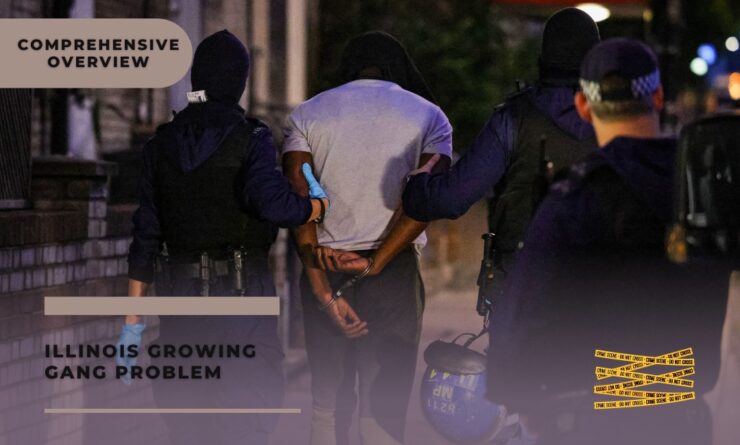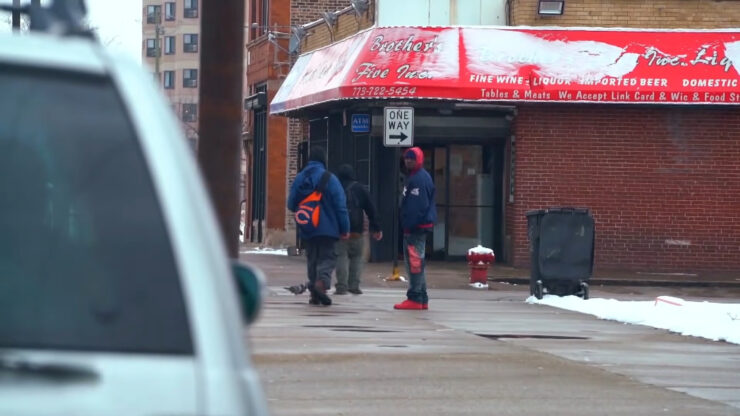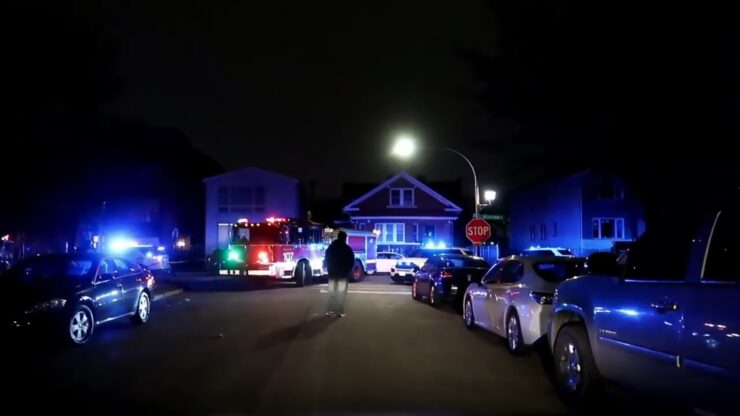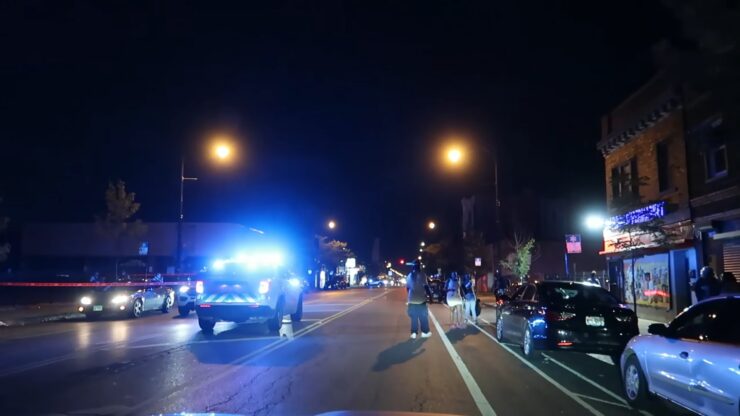Gangs have long been a subject of concern and study due to the threat they pose to societal stability and public safety. In Illinois, this issue is particularly pressing, with both urban and rural areas grappling with significant gang-related problems. Our report provides a detailed overview of the 1995 National Youth Gang Center Survey and a summary of 1996 interviews conducted by the Illinois Criminal Justice Information Authority.
The Pervasive Threat
Gangs are not just an urban issue; they are a serious problem across Illinois, affecting both urban and rural areas. The threat they pose to communities is significant, impacting the overall quality of life. The presence of gangs in a community often leads to increased crime rates, decreased safety, and a general sense of unease among residents.
This pervasive threat of gangs is not just a law enforcement issue but a community issue that requires a comprehensive approach to address. The impact of gangs extends beyond crime rates, affecting community cohesion, public perception of safety, and even property values.
In addition to the immediate threat of violence, gangs also contribute to long-term societal issues such as drug addiction, school dropout rates, and economic instability. They can disrupt the fabric of communities, creating environments of fear and mistrust.
The presence of gangs can deter businesses from operating in certain areas, limiting economic growth and opportunities for residents. Therefore, addressing the gang problem is not just about reducing crime, but also about improving the overall wellbeing of communities.
The Growing Presence of Youth Gangs
One of the most alarming findings is the prevalence of youth gang problems. According to the survey, a staggering 86% of Illinois police jurisdictions and 83% of sheriff’s departments reported a “youth gang problem” in 1995. This is a clear indication that the issue of gangs is not just confined to adult populations but is increasingly becoming a youth problem. The involvement of young people in gang activities is particularly concerning as it not only endangers their lives but also disrupts their education and future prospects.
The rise in youth gang involvement is a troubling trend that requires urgent attention. Young people are often drawn to gangs due to a variety of factors, including the desire for a sense of belonging, the allure of power and respect, or the lack of alternative opportunities. Once involved, they can find themselves trapped in a cycle of violence and crime that can be difficult to escape. This not only harms the young people involved but also has long-term negative effects on their families and communities.
The Spread Across Communities
Gang presence was perceived to be growing in all types of communities, with rural officials noting the sharpest increase. This suggests that the problem of gangs is spreading beyond the traditionally affected urban areas into more rural communities. This expansion of gang activities into new territories underscores the need for a comprehensive and wide-reaching approach to tackle this issue.
The spread of gangs into rural communities presents unique challenges. These areas often lack the resources and infrastructure to effectively combat gang activity. Additionally, rural communities may be less equipped to deal with the social and economic issues that often accompany gang activity, such as drug abuse and community violence. Therefore, it is crucial that strategies to combat gangs take into account the specific needs and circumstances of different types of communities.
The Issue of Migration
An overwhelming 92% of interviewed police officials were aware of gang members migrating to their jurisdictions, and 77% were aware of their local gang members migrating to other locales. This trendof gang migration poses additional challenges for law enforcement agencies as it complicates tracking and controlling gang activities.
Gang migration can be driven by a variety of factors, including the pursuit of new criminal opportunities, avoidance of law enforcement pressure, or personal reasons such as family relocation. Regardless of the reasons, the migration of gang members can lead to the spread of gang culture and criminal practices, exacerbating gang problems in new areas.
It also highlights the need for improved information sharing and coordination among law enforcement agencies across different jurisdictions.
The Connection Between Gangs and Drug Sales
One of the most significant findings is the strong connection between gangs and drug sales. Our report indicates that 63% of the interviewed jurisdictions reported that the gangs in their jurisdiction were “heavily” involved in drug sales, and 87% stated that gangs were at least “somewhat” involved in drug sales. This highlights the role of gangs in the drug trade, contributing to the broader societal issue of drug abuse and addiction.
The involvement of gangs in drug sales is a critical aspect of their impact on communities. Drug trafficking not only provides a source of income for gangs, but it also contributes to a range of social problems, including addiction, family breakdown, and community instability. Furthermore, competition over drug markets can lead to gang conflicts and violence, further threatening community safety.
The Need for a Multi-Jurisdictional Approach
It suggests that communities are using a range of approaches to respond to the gang problems they have been encountering, from gang awareness and education, through strict law enforcement action in the face of crime, to community programs for youth. This multi-pronged approach is crucial in effectively tackling the complex and multifaceted issue of gang activity.
A multi-jurisdictional approach recognizes that gang activity is not confined to specific neighborhoods or cities, but is a problem that crosses boundaries. It requires collaboration and coordination among different law enforcement agencies, as well as partnerships with community organizations, schools, and other stakeholders.
By working together, these different entities can develop comprehensive strategies that address the root causes of gang involvement, disrupt gang activities, and provide support for individuals seeking to leave gangs.
Notable Gangs in Illinois
While there are numerous gangs operating in Illinois, some have gained particular notoriety due to their size, level of activity, or the severity of their crimes. These include the Gangster Disciples, the Latin Kings, and the Vice Lords.
The Gangster Disciples
The Gangster Disciples is one of the largest and most notorious street gangs in the United States, with a significant presence in Illinois. Known for their sophisticated organizational structure and involvement in a wide range of criminal activities, the Gangster Disciples pose a significant threat to community safety.
The Latin Kings
The Latin Kings is another prominent gang in Illinois, particularly in the Chicago area. Known for their distinctive symbols and rituals, the Latin Kings are involved in various criminal activities, including drug trafficking and violent crime.
The Vice Lords
The Vice Lords, one of the oldest street gangs in Chicago, are known for their violent confrontations with rival gangs. Despite efforts to curb their activities, the Vice Lords continue to be a significant presence in certain parts of Illinois.
In conclusion, the report “Gangs and Gang Activity in Illinois” provides a comprehensive overview of the gang problem in Illinois, highlighting the pervasive nature of the issue and the need for a concerted, multi-jurisdictional approach to tackle it. As communities across Illinois continue to grapple with this issue, it is clear that a combination of law enforcement, education, and community engagement will be key to mitigating the impact of gangs on our society.
The Impact on Communities
Gang activity has a profound impact on communities, extending beyond the immediate threat of violence and crime. The presence of gangs can lead to a decline in property values, deter businesses from operating in the area, and create a pervasive sense of fear and insecurity among residents. This can lead to a cycle of decline, as communities become less attractive to potential residents and investors, further exacerbating economic and social challenges.
Moreover, the impact of gang activity on young people in the community cannot be overstated. Young people who grow up in gang-affected neighborhoods are at a higher risk of falling into the cycle of gang involvement and violence. This not only disrupts their education and future prospects but also perpetuates the cycle of gang violence and crime in the community.
Strategies for Addressing Gang Activity
Addressing the issue of gang activity requires a comprehensive and multi-faceted approach. Law enforcement plays a crucial role in this, through efforts to disrupt gang activities, prosecute gang members, and dismantle gang structures. However, law enforcement efforts alone are not enough. They need to be complemented by prevention and intervention strategies that address the root causes of gang involvement.
Prevention strategies aim to deter young people from joining gangs in the first place. This can involve a range of initiatives, such as providing positive role models, offering recreational and educational opportunities, and promoting gang awareness and education in schools and communities.
Intervention strategies, on the other hand, aim to help those who are already involved in gangs to exit and stay out of gang life. This can involve providing support and resources to help individuals overcome the challenges they face, such as addiction, lack of education or employment opportunities, and the pressure to remain loyal to the gang.
Conclusion
The issue of gangs and gang activity in Illinois is a complex and multifaceted problem that requires a comprehensive and coordinated response. While the challenges are significant, the report “Gangs and Gang Activity in Illinois” provides valuable insights that can inform efforts to tackle this issue.
By understanding the nature and extent of the problem, and by working together across jurisdictions and sectors, it is possible to make progress in reducing the impact of gangs on our communities and creating safer, healthier environments for all residents.


















